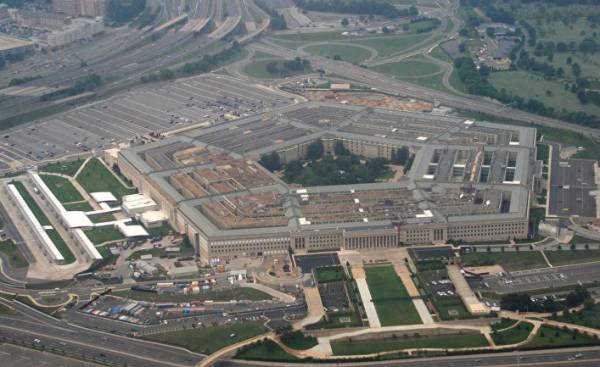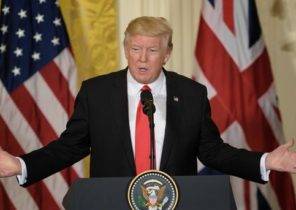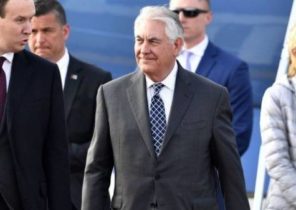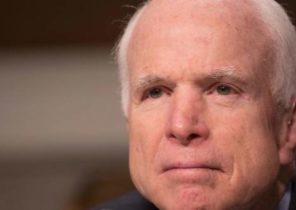
Among those the most serious foreign policy problems faced by former President Jimmy Carter, there’s one that never openly reported, but which is again gaining relevance. We are talking about nuclear war and how it will survive the us government. The solution to Carter’s still classified, but recently declassified CIA documents, archives and several presidential libraries offer new ways to look at the White house preparing for the inevitable Apocalypse.
Today such an Apocalypse can cause any non-nuclear-weapon States, including North Korea and Pakistan. During Carter’s greatest concern in this regard was caused by the Soviet Union. During this period, planners in the armies of the two countries began to reflect on the fact that was previously considered unimaginable heresy: the rejection of the concept of mutually assured destruction, which the rules of the global order between 1950-ies and prepare for survival during an all-out nuclear war.
Carter and the White house was interested in more specific questions. If the President would survive a nuclear war, what will he do after it? How to identify survivors in chief? Who is going to identify it? He will perform three major presidential duties: chief Executive, head of state and commander of the armed forces?
Carter gave the answers to these questions in the presidential Directive No. 58, which was adopted in the last months of his presidency. Ronald Reagan in 1983 amended the plans by creating a presidential Directive. It says about continuity of government plans that remain in effect for the administration of the trump. For its implementation developed a series of multibillion-dollar programs, and it has become one of the most attractive topics for conspiracy theorists around the world.
We will talk about how the government has developed one of the most secret of their plans in the area of national security and how the administration trump and her successors will be able to use it to survive the end of the world in the form in which it is known to us.
When Carter came to power, the Soviet Union was actively preparing for nuclear war. It was a costly program of civil defense, hundreds, perhaps thousands, of underground bunkers, as well as a range of government programs.
And the US was ray Derby (Derby Ray). Derby, born in 1935 in Iowa, has become one of the leading experts of the Ministry of defense for readiness for emergency situations and elimination of their consequences. In Europe he spent training for the mass evacuation of the civilian population of the NATO countries, have trained instructors, who evaluated the ability of organizations and agencies to resist the attacks with use of nuclear weapons. In the USA he was the head of numerous government working groups, civil defence in nuclear, biological and chemical accidents. He has also developed a standard plan for the use of American nuclear bases in the event of a disaster. By the time of the inauguration of Carter in 1977, Derby was responsible for the training and operational work on zapadnogermanskaya the command post of the Federal Agency of mobilization readiness, which is subordinate to the General services Administration.
At that time there was the main Federal plan of action in case of universal catastrophe such as nuclear war. This emergency plan D required each Federal Agency to design, develop and build their own well-protected underground shelter. In an emergency situation, the government had to lead the country out of such bins. Most agencies are not very serious about this duty.
The Federal Agency’s mobilization readiness requested Derby to perform the implementation of plan D. In the first place, he noted that agencies rarely conduct training within their plans. Few of them complied with regulations, directives, and even abide by the relevant laws in their daily activities. Many employees of government agencies did not even know whether they are the team to evacuate in an emergency.
Such defects were the result of systematic negligence that occurred at the dawn of the nuclear age. If you don’t count the short period after the Cuban missile crisis, when the country built six evacuation centers for the Federal government, the United States did not consider civil defense as an integral part of its doctrine of strategic deterrence. The Federal government willingly and enthusiastically spent money on weapons modernization, protection and survival of population after nuclear attack. In 1970-e years, many government departments have abandoned the plan of actions after a nuclear Holocaust, believing that it must deal with various Federal organizations, names of which include words like “willingness” and “mobilization”.
Derby felt that the problem is much broader, and it’s not just funding. American society during the interviews, stated that he desired the program of civil defense. But it lived in peace and did not want to pay attention to its development. The Americans could believe that somewhere there exists a large-scale program ready for implementation in the event of a Soviet attack. By the 1970 years, the United States ceased to bury your head in the sand and talking about a comfortable discharge. No urgency in this program was not. And presidents for its preparation is not particularly insistent.
There was another complication. To save the country in case of nuclear war, the military had to step over one of their red lines and to deal with matters of internal security. After a nuclear war, martial law was almost inevitable, and the military were to get a huge authority on the allocation of resources. But the government also believed that some form of martial law will be required before the war. Making sure that the war could be inevitable, the government had to evacuate a significant portion of the population, especially those who lived near the important strategic and military facilities. Politicians understand that this will require coercion and even force. Neither the military nor the politicians didn’t like to talk about such a scenario. Therefore, plans have been developed in secret and given the secrecy, to know about them less, and to not have to answer to him.
What about the government? In an emergency situation and when changing state of combat readiness of the joint chiefs of staff had ordered 60 executives to move to the main evacuation centers. The government has so-called sensitive sites at the top of the mount of water in Virginia, where the top leadership of the Executive must govern the country in case of nuclear war. Was built and additional underground shelters near Hagerstown, Maryland, Martinsburg, West Virginia, on the basis of the marine corps near Quantico, Virginia (FBI), and the Front Royal in the same state, where the sensitive sites was to recreate the state Department. There are other shelters hidden in colleges around Washington.
But the army and air force helicopters will be enough to transfer only one third of the required number of managers (and this is assuming that flying by air will be possible). The instructions said that if helicopters will not, they need to reach their evacuation centres in some other, unspecified way. In addition, if the top us leadership still gets to mount water, it will be very difficult to communicate with Federal agencies, with other countries and with the American people. Last but not least this is because the evacuation centers for at least staffed.
Many political leaders don’t want to think about how to train for the event of war, or that they voluntarily hide in secret bunkers away from people and their families. (One of these skeptics in the 1970-ies was dick Cheney, then worked in Congress.) The American government came from the fact that, in any case, all known. They even bought a piece of land at the foot of the mount, water, to monitor staff movements of the sensitive sites. In the event of an approaching Apocalypse prevention would be a futile undertaking.
By the time when Jimmy Carter became President, the country has to spend on civilian defense less than $ 100 million per year, while the modernization of nuclear weapons was over $ 30 billion annually. Congress established the cost of a single program of civil defense, but funded it enough. Carter was the first after President John Kennedy had paid her considerable attention. In September 1978 he announced that civil defense is part of the national system of strategic deterrence, because unprotected against nuclear attack, the population and the government increasingly vulnerable to threats and coercion. In brief the presidential Directive at that time classified as “Secret” is exactly what was said. And the more there is almost nothing.
First, the budget of the civil defense of the United States increased modestly. But studies showed how weakened the civil defense of the country. Built in 1950-ies of the fallout shelters have become outdated and needed repair or replacement. Various agencies and departments had ignored those obligations they had to fulfill in accordance with the presidential orders. There were no Federal guidelines on the evacuation of a large number of the population, although it is the cornerstone of any program of civil defense. In the course of military exercises such hypothetical scenarios are almost completely ignored. Conducted research became the basis for the development of innovative policy.
Despite the objections of the Pentagon, Carter has over time ensured that the state program of civil defense and survival program authorities were consolidated into one office, and in front of him was an ambitious goal. During the General nuclear war, the state is obliged to save 80% of the population — and prepare for that it needs funding, amounting to less than $ 250 million a year.
June 19, 1979 was signed the order about creation of Federal Agency on management of the country in emergency situations (FEMA). Carter made the Director of this Agency is more important is placed before the national security Council and the Pentagon the task of supervision of civil defense. She was inextricably tied to national security and strategic nuclear policy. In a secret memo, the CIA said that the course of action the President during a nuclear war now is an integral part of national security strategy.
Ray Derby all loved it. FEMA was supposed to lead the conservation program of public authorities in the event of war, on which he worked, however, the Agency has set him another task — to take its origin sensitive sites on mount of water, becoming in fact its mayor. The secrecy of the object was increased, and the budget staff. Now he had to ensure the survival of leaders from the official list, creating a reserve of resources needed to restore the state and government after a nuclear war.
Meanwhile, the White house focused on solving the most difficult problems in the establishment of a mechanism for the successor of the President, so they can follow orders during the war, during and after a nuclear exchange. At the beginning of the presidential term of Carter, the Director of the Military office of the White house Hugh Carter (Hugh Carter) convened a small working group to perform the action plan of the White house in an emergency. This is a top secret document outlining an evacuation order of the President guard service and the appointment of successors by the Military office of the White house in the case of the death of the President.
The main outline of this plan was outlined in a series of papers called PEAD (documents on actions in case of emergency with the President). These documents are then analyzed and supplemented national security Advisor Zbigniew Brzezinski and his military aide, Colonel bill Odom (Bill Odom). Odom wrote in his memoirs that the proposed course of action surprised him with a lack of creativity and detachment from reality.
In one of the memoranda the White house noted that daily communication between the Pentagon and the shelters of the President at mount Wetere, camp David and the White house under normal circumstances, it is “satisfactory”. But in the period of social unrest and “uncoordinated subversive activities” assessment “satisfactory” is not good enough. The authors of the Memorandum concluded that in the case of conventional or nuclear war shelters “will not provide sufficient protection”. In other words, those survivors who hide in the depths of this special object, will not last long, and will be affected by the blow.
In practice, this meant one thing. Stationary control centers useless. It is theoretically possible to create mobile command centers. But the White house could not rely on the fact that the President, or his successor, in case of a sudden nuclear attack will fly by plane and will lead the country with his side. Even if such an attempt is successful, will be absolutely do not know what the people around him.
Meanwhile, as the “presidential nuclear suitcases” were only Carter and Vice President Walter Mondale (Walter Mondale), the system of nuclear control of the country could come to a complete stop in the event of death or severe injuries if not will have found a different way to tell the military who became head of state and the army.
The military office of the White house suggested a solution to the problem lies in the fact that the designated people must say the code word. Thus, if from among the possible successors survived the speaker of the house of representatives Thomas O’neill, Jr., (Thomas O’neill Jr.), to obtain full authority to direct the state and its nuclear Arsenal was to inform the duty officer in the operational command center of the Pentagon two codeword: FLAG DAY. Have next in line for the presidency were the other code words: FOUR FINGER. Secretary of state Cyrus Vance (Cyrus Vance) was to confirm his identity, saying code FADE AWAY.
In fact, operational staff officer in the Pentagon probably would want to ascertain that the survivor is the person who he seems. But if Soviet missiles are on the way, then, according to the inventors of this unreliable system, probably you’ll be tempted to go by the shortest route. In this case, the effectiveness of the military response and security of the country will be in great danger.
Realizing these problems, the working group of the White house has tried to develop more flexible and decentralized concept of the survival of the government. Looking for the definition of continuity of presidency, she returned back to the three bureaucratic but very important ideas: vitality (the President and his closest team has safely survived the war), the possibility of interaction (they need to be in touch with each other, the country with the heads of other States) and the availability of support (people need other people who can help them).
On this basis, the working group has developed key recommendation: create five “interagency group” of 50 people each, which in an emergency will be requested to take their seats and to support the successors of the President. The Pentagon called these commands the support of a codeword TREETOP (top of the tree). These groups were placed on randomly chosen out of hundreds (or thousands) of places, objects that would provide “flexible and adaptive transfer of essential institutional knowledge.”
Team Odom has compiled a list of requirements to these groups. The first thing was to make such scheduled and deployed the group to determine who in rank shall be the successor of the President. Details a system that they are stored in the strictest confidence, but I am told that there are “tracking chips” for a possible successor of the President, the signals of which are amplified with the help of repeaters of radio frequencies. These signals gathers FEMA and the national military command center. Even there, it is an important technology of identifying marks and tracking of candidates, which provides additional protection from substitution. (But this plan was developed before the advent of proper equipment and didn’t work. Only under George Bush the government was able to implement passive electronic monitoring of some of the successors of the President using satellites and cell phones.)
Second. Each team must help the successor in the performance of the three major presidential duties: as commander in chief, as head of state and as head of the Executive branch. This team should establish contact with other surviving teams that will be able to identify. For the implementation of the plan nuclear war she needs to get in touch with the Pentagon or with the surviving elements. It would receive intelligence reports and data to the damage. She will also have to establish contact with local authorities and with the authorities of the States. If we are to speak prosaically, a team of 50 people will have to operate as an independent body of Executive power without assistance for at least six months.
The work of the group Odom has been slow. Different agencies receive requests to perform, will they be able to perform a series of secret Executive orders. Their contents are still classified, but some open documents allow you to separate pieces of information. The white house of Carter in General has published 29 papers from the PEAD. Document No. 2 dedicated to the restoration of Congress that is a very sensitive issue for the Executive branch, and open in correspondence it is mentioned very rarely. Document No. 5 is called “the mobilization of the resources of the country.” And number 6 is devoted to the convening of a civilian reserve in an emergency.
How to revive the Congress? What resources can be mobilized? Who will call in reserve? We don’t know until now.
But we know this. When Carter as its presidential decree in the late 1980s introduced these changes into effect, the CIA established its own secret Agency called National Directorate of intelligence support in an emergency from the headquarters in Virginia. It must obtain data from all agencies, the CIA and be sent immediately to randomly selected space groups TREETOP their teams within the membership of three people.
Of the budget documents we also know that agencies have begun to ask for more money to Finance the teams of support of the successor to the President. We know that the Pentagon began to check mobile control centers. We also know that the air force has developed plans for the allocation of the frequency band to ensure continuity of government in the most recent satellites. We also know that the designated successor of the President will be placed in mount Wasere during events, which brings together the heads of all branches of government, for instance, during the annual address of the President on the situation in the country.
We also know that Reagan believed this system does not meet the requirements. He was informed about it even before taking office, but by adopting in 1982 the participation in command post exercise Ivy League, Reagan was convinced that the President in the event of war, not to survive, but presidential power is not preserved. It revealed serious shortcomings in the defense of the country. One of his top lieutenants Thomas reed (Thomas Reed) along with seconded to the national security Council officer in the marine corps by the name of Oliver North (Oliver North) convinced Reagan to make some changes to the system of Carter, but not to abandon it.
Flash forward 35 years. Force Russia seized the Crimea, and NATO, which lacks funding, worry about the fact that because of the invasion of Russia in the Baltic States the Alliance will be on the brink of war. The United States was concerned that North Korea is about to create for their respective nuclear warheads of Intercontinental ballistic missiles capable of reaching some U.S. territories. President Donald trump has used military force against Russian-backed sovereign state, seeing it on TV dying from sarin kids. He spoke about the capacity (not just improvement) nuclear Arsenal, but has not yet demonstrated the ability to tactfully respond in a crisis situation.
Since Jimmy Carter’s emergency survival plan has undergone many changes. We can safely assume that the successor of the President will recognize not only spoken in a whisper the code word. But those threats, which may need to utter these words, today is much closer than we would like.
Mark Ambinder — editor of The Week on General issues. He also writes for GQ publication. Ambinder, the author of the book “Deep state: Inside the government secrecy industry” (Deep State: Inside the Government Secrecy Industry).







